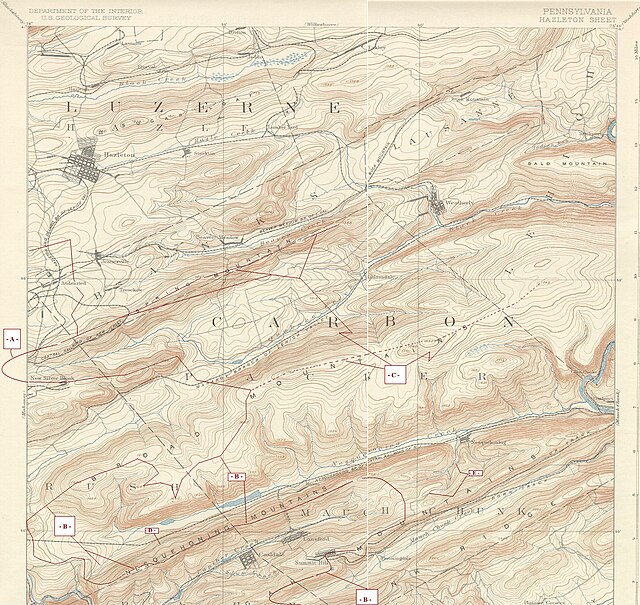Mauch Chunk Switchback Railway
The Mauch Chunk Switchback Railway, also known as the Mauch Chunk and Summit Railroad and occasionally shortened to Mauch Chunk Railway, was a coal-hauling railroad in the mountains of Pennsylvania that was built in 1827 and operated until 1932. It was the second gravity railway constructed in the United States, which was used by the Lehigh Coal & Navigation Company to transport coal from Summit Hill downhill to the Lehigh canal.
An aerial view of the Lehigh Canal in Jim Thorpe, Pennsylvania, c. 1870
Josiah White and Erskine Hazard-founding partners of the Summit Hill & Mauch Chunk Railroad
Pisgah Mountain and the topography of the Summit Hill and Mauch Chunk Railroad
An 1832 portrait of the terminus of the Mauch Chunk & Summit Hill Railroad and the coal loading chutes below by Karl Bodmer
A gravity railroad or gravity railway is a railroad on a slope that allows cars carrying minerals or passengers to coast down the slope by the force of gravity alone. The speed of the cars is controlled by a braking mechanism on one or more cars on the train. The cars are then hauled back up the slope using animal power, a locomotive or a stationary engine and a cable, a chain or one or more wide, flat iron bands. A much later example in California used 4 ft 8+1⁄2 in standard gauge steam engines to pull gravity cars back to the summit of Mt. Tamalpais.
Gravity car no. 21 on the Mt. Tamalpais and Muir Woods Scenic Rwy c. 1915.





